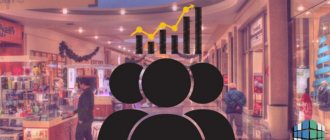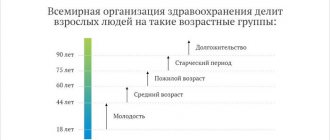Behavioral economics studies the irrational behavior of people under the influence of social factors. If you want to better understand your customers and make more informed decisions about products and services, you'll need to get to grips with this issue. Knowledge of the tenets of behavioral economics is especially useful for startups, which are more interested in improving their metrics than other companies. In this article we will look at some of them.
Limitations create a feeling of scarcity
In his book Thinking, Fast and Slow, Nobel laureate Daniel Kahneman gives an example of how scarcity affects our evaluation of objects and our desire to possess them.
One grocery store in Iowa was offering a 10% discount on canned Campbell's soup. Sometimes a cardboard box with the inscription “No more than 12 pieces per person” appeared next to the cans. Interestingly, the average number of cans purchased was seven on days when there was a limit sign in front of them, but just three when there was no limit.
The feeling of scarcity forces people to take certain actions. We involuntarily associate the availability of a product with its quality, and the limitation creates the impression that it is a scarce product. The fact that a product is difficult to acquire increases its value in our eyes, and we buy more because we are afraid that we will lose access to it.
A feeling of scarcity can also arise when participation in a community is limited. For example, Product Hunt rewards its users with the right to post comments on the site and gives them the ability to invite three friends to enjoy the same privileges.
This restriction not only acts as a filter, limiting the posting of new products and encouraging users to make more meaningful comments, but also contributes to the cohesion of this community due to its exclusivity.
Limiting the number of invitations inspires people to take active action: someone starts voting for certain products to show that they are “in the know,” and someone supports the community by inviting new people.
What does your target audience look like?
Not all promotion methods are effective in one case or another. Before finding clients for consultation, a psychologist needs to do some research. In order to choose the right way to advertise your services, and it would bring maximum effect, you need to clearly understand who your target audience (CA) is.
REFERENCE. From a marketing point of view, the target audience refers to the group of customers who are most likely to buy a particular product or order a particular service.
In order for a psychologist to figure out who his target audience is, he must work in his profession for at least six months. After this time, you should analyze the requests of all clients who have ever contacted you, and based on this information, create a general portrait of your target audience. For example, these could be:
- young mothers concerned about raising their child;
- graduates of prestigious universities who are disillusioned with the state of affairs after graduation;
- single women with internal problems and complexes, etc.
When forming the image of the target audience, the following criteria should be taken into account:
- demographic (gender, age, nationality, etc.),
- social (education, income level, etc.),
- geographical (region, city),
- psychological (life position, interests, lifestyle, etc.).
Limited Time Coupons Cause Fear of Missing Out
Two marketing professors, Suzanne Shue and Ayelet Gneezy of the University of California, Los Angeles and San Diego, found that gift certificates with a two-month expiration rate were 6% engaged, while the exact same gift certificates with a three-month expiration date were up to 6%. weeks are used in 31% of cases.
The key idea of this article is that the desire to save is not always strong enough to motivate a person to make a purchase. Rather, it is the fear of losing something (in this case, missing out on a good deal and the opportunity to save money) that is at work here. By understanding this, you can influence your customers' feelings.
Last year, while working on an article about email marketing optimization, I created a new email address and signed up for 125 startup email lists. A little later, I checked my account to compare the expiration dates of the discount coupons.
Some startups, such as Jet, threadUp and fitmob/ClassPass, had discount coupons for the first order that did not have an expiration date:
Other startups, such as Instacart, DoorDash, Threadflip, Rent the Runway and Zendesk, had these coupons for a limited time.
Many people like to get something for free or “save”, but it is the end date of the discount that motivates people to take specific actions so as not to lose it.
I think that even an introductory offer with an expiration date on the discount can improve conversion, but you can go even further.
Food delivery service UberEats uploads discount coupons directly to customers' accounts. I think this is done to save customers from having to remember a discount code.
Perhaps this is just an experiment. But I think it's a very promising strategy to give people coupons that they don't have to enter their email address or log into Google or Twitter to use. If you know you already have a discount on your account, you probably won't look at other grocery delivery apps.
The downside to this strategy is attribution. If a coupon code is downloaded automatically, you won't be able to tell who used it (unless they tell you so).
A limited-time coupon offer, like Uber's, encourages customers to redeem the discount.
Create a deficit
Calls to purchase a product “today only” at a super favorable price are a good way to attract both new and old customers to the online store. Phrases that create the effect of “urgency” act like an energy drink: “Last day of discounts”, “Last chance to buy”, “Just one day”...
This is a very powerful way to attract customers to an online store, catching attention and stimulating them to make a purchase. The main rule: you must not deceive the buyer. If it says that “a sale (or product) ends today,” there should no longer be a discount on that product (or the product itself) tomorrow. Otherwise, you will lose the trust of customers, and next time they will not respond to your “special offer”.
Special offer with a timer in the online store loccitane.ru
The expiration date of the offer stimulates buyer activity
For the past 30 years, the company has been removing the McRib sandwich from its menu from time to time, although the supply of pork has not stopped for a day.
Periodically updating the menu helps create excitement about the return of a particular product. This artificially maintained sense of scarcity encourages customers to order their favorite items as soon as they appear on the menu, before they disappear again.
Likewise, a shortage of one product causes people to return to a store or restaurant more often, and they may buy something else along the way. Thus, scarcity increases profits.
Some startups deliberately limit the time they release products or provide services in order to increase the number of customers.
In August 2014, Uber launched the UberPool car sharing service, and on November 5, 2014, they held a "lucky car" promotion in which passengers who ordered the new service that day could win $500 in cash.
I was a beta tester for UberPool services and at first I often found myself the only passenger in the car. But after this action, every trip began to really be justified. The limited offer promotion attracted many people who subsequently continued to use this service.
The only advice I would like to give to ecommerce companies is: if you want to dominate the market, do not restrict access for a long time.
You may be familiar with the Pareto principle: 20% of customers generate 80% of revenue. So: in e-commerce the 98% rule applies. Chris Anderson in his book The Long Tail. An Effective Online Business Model” (The Long Tail) explains that the “long tail” of niche (that is, unpopular) products are in greatest demand in e-commerce.
Thus, 98% of the 100 thousand popular books on Amazon are purchased on average once a quarter, and similarly, 95% of Netflix's 25 thousand DVDs are ordered once a quarter (now this number has exceeded 42 million).
The more options you offer, the higher the demand. The more products you have on your platform, the more customers you can satisfy. If a buyer does not find a niche product from you, he will go to another site.
Types of Buyers
Experts point out that entrepreneurs and sellers often confuse the concepts of a buyer and a person in general. A buyer is a function or role that a person performs. Exactly the same as the official role (function) of a person at work.
Buyer behavior is formed on the basis of subjective factors that are relevant only at one specific point in time. And it is not at all necessary that his behavior in ordinary life is exactly the same as at the moment of choosing a product. And it is unlikely that the behavior of the same person when buying a bottle of beer or when buying a refrigerator can be the same.
There are many principles for classifying buyers.
First principle: by intention
First type
These are those who go with a specific purpose to buy, and they know exactly what they want to buy. Experienced sellers always know that such buyers can be easily identified by external signs: they move, as a rule, quickly, their gaze is always specific and precise, they focus on the product they are going to buy.
Second type
These are buyers who are basically going to buy something, but don’t know exactly what yet. For example, they are looking for some kind of gift for someone’s birthday. But they will buy something anyway.
Third type
Buyers who are simply browsing the shopping aisles and are ready to buy something if they see something they really like.
Fourth type
Buyers who are just looking, asking prices, choosing. They are not planning to buy yet. They might come and buy another time. They will buy from the store they like best. Moreover, you may not like the product, but something else - the service, the interior, or the seller as a man or a woman.
This is often what happens - men buy in a store where, for example, the sales girl is pretty. This is also one of the subjective, but significant factors.
Fifth type
"Idlers." There are always a lot of them too. They look at the product, ask questions, try it on. They do this often and for a long time. But they rarely buy it.
It is not difficult to determine the type of buyer in this group. Body movements, eyes, pace of conversation - all this reveals what a person’s intentions are right now. Depending on this, you need to build a conversation with him. For example, it is useless to try to keep the first type of buyer in your store if, as soon as he enters there, he immediately wants to leave. And with others you should definitely try to start a conversation, but with each one in a different way. Don't waste time with a Type 5 customer if there are other people in the store at that moment.
The second principle of classification: according to a person’s character
All people are different, so they react differently to the same external circumstances. Depending on their personality and temperament, experts divide all buyers into 2 large types: “adults” and “children.”
By “children” we do not mean children in the literal sense, but adult customers who behave like children.
"Adults"
They most often know exactly what they need, and their decision to buy or not to buy the product will not be influenced in any way by the behavior of the seller. They only need to say anything in question-and-answer mode. All other speeches of the seller will be superfluous for them.
"Child Customers"
They are divided into three subtypes:
- "eccentric";
- "obedient";
- "quiet pool"
Most adults are children at heart. And everyone always wants some kind of “candy” - some little joy, pleasure. But everyone has different ideas about this candy. Some people see this little joy directly in some thing, while others just need communication.
"Cranky Child"
For this type of buyer, the “candy” is to attract maximum attention to themselves. Therefore, the process of choosing a product for it should be accompanied by the most attentive and courteous service from the seller. If such a buyer is not given enough attention, it makes him angry. And communication with the seller turns to elevated tones, or even ends in a scandal.
"Obedient Child"
This type of buyer most often includes insecure, dependent and infantile people who do not like to take responsibility. Therefore, when choosing a product, they want to rely entirely on the opinion of the seller. And often they buy what the seller recommended to them.
It would seem that this type of buyer is a real treasure for the seller. But it's not that simple. It happens that when they come home and show off their purchases to relatives (wife, husband), these people get a scolding, because... We didn't buy what we needed. And this may be followed by such a buyer returning to the store together with an angry relative with the aim of causing a scandal and (or) returning the “imposed” product.
"Quiet Whirlpool"
This type of buyer often coincides with “loitering”. They most often do not refuse to listen to all the seller’s monologues about the quality and advantages of the product; they silently listen to everyone, nod with a smile, and agree. And then they say “thank you” and leave, leaving the seller in silent bewilderment. This is just the type of people - shy and absurdly overly tactful. They do not dare to interrupt the seller’s speech and cannot immediately say that they are not going to buy anything.
It is often difficult to determine the type of buyer from this group; it all depends on the individual professional qualities and experience of the seller.
There are many other principles for classifying buyers. But there is no need to go into them too deeply, because... Many stable stereotypes can form in the seller’s mind, which will interfere with an adequate, live perception of a person. Each person is always individual, and each situation is unique.
A more expensive product is perceived as more valuable
If you believe in something, you will force your brain to look for confirmation of it.
Author of the book “Buyer on the Hook. Hooked: How to Build Habit-Forming Products Nir Eyal mentions an interesting study. Participants in the experiment sampled wine that cost $5 a bottle and then moved on to taste wine that cost $90 a bottle.
It is clear that more expensive wine has a subtler taste. But the experiment confirmed that the participants' statements actually reflected how they felt: when tasting a more expensive drink, the parts of their brains associated with pleasure showed higher peaks. This was despite the fact that both bottles contained the same wine.
Sometimes a startup must raise its price to improve brand perception. The Sequoia Guide to Pricing explains that pricing is one of the most important strategic decisions for a company. Unfortunately, many realize this too late.
Tesla and Uber started off with exclusive products and services before moving on to create affordable alternatives.
In 2008, the Tesla Roadster appeared on the market. This car could accelerate to 60 mph in 3.7 seconds and travel 245 miles on a single charge of its lithium-ion battery. Its price exceeded $100 thousand.
The Model S electric sedan was released in 2012. It goes from 0 to 60 mph in 5 seconds and has a range of 265 miles. Two years later, Elon Musk solemnly announced an all-wheel drive version of the Model S with two dual engines. This car reaches 60 mph in 3.2 seconds, faster than any previous Tesla. At the same time, its price was lower than others and amounted to only $59,900.
Tesla first released an expensive car, and then moved on to create a more affordable model. The exclusivity of the product creates a feeling of high quality. Many of those who could not afford to buy the first Tesla car called it their dream car. And when Tesla finally released a cheaper version, customers were already hooked.
Uber began renting black UberCab limousines in March 2009. In July 2012, Uber announced the UberX project, in which each trip cost the client 35% less than in UberCab. And in August 2014, Uber announced UberPool, a car-sharing service that cost initially $5, then $7, and now depends on the distance and duration of the trip.
Both companies started their activities with exclusive, expensive cars. Both targeted niche clients with high disposable income before moving on to lower-cost alternatives and expanding their markets.
Narrow framing, or “narrowing of the frame”
Too much choice forces a person to think a lot, weigh a lot of factors, study the subject of a future purchase, weigh the pros and cons. Of course, when it comes to a more or less expensive product, a preliminary search and analysis of alternatives and proposals is an inevitable stage. However, even in such cases, a person tends to set boundaries in advance and then narrow them down. In the process of narrowing, almost all options are discarded, and the “winners” are often those whose acquisition is justified by minimal costs of any kind. Logic and prudence do not always go hand in hand with purchasing decisions.
For example, when considering the need to purchase a new wallet, a middle-aged man immediately narrows the scope to a leather product. By default, this means that it will have two compartments and a number of additional ones. pockets, the total number of which is not critical. The buyer does not think about the fact that wallets are now made not only from leather, and there are alternatives to wallets as containers for money. Having immediately determined for himself that he needs a leather wallet, he makes the task much easier for himself and narrows the scope. As a result, the choice becomes color: black or brown?
How can this feature of human psychology be applied to retail?
An online store can launch contextual campaigns and promote its pages for specific, verified queries. In the context of the example above, this means choosing the keys “Black wallet [geo, price niche, etc.]” and “Brown wallet [geo, price niche, etc.]” rather than “Buy wallet Moscow”. Costs will be lower, conversion will be higher, since a narrow, specific request in itself qualifies the leads.
An offline store can work out the display accordingly and arrange its products according to the criteria that are most popular among customers. The same wallets can be beautifully arranged in a variety of ways, or you can fill the shelves in even rows, sorting items by color, material, size, and price. A person who comes to a store with the decision to buy a black leather wallet for no more than 2,000 rubles will be able to quickly get his bearings, which significantly increases the likelihood of a sale.
Important point:
Don't offer a buyer who comes to buy a leather wallet a money clip or a synthetic wallet with a bunch of zippers that will keep his savings from getting wet if he falls into the river. Don't offer alternatives. A person who has made up his mind subconsciously does not want to strain his brain any more and consider any other solutions, and if he is forced to face alternatives, he may refuse to buy altogether, believing that the issue requires additional elaboration.
The fewer functions in your website menu, the more active your customers will be
I once asked the director of information services at American Apparel what action on the site helped him increase conversion. Here's what he said: Conversion rates increased by 12% when the number of buttons on the home page was reduced from 9 to 4.
A large number of buttons on the main page makes it difficult to navigate the site. Limit their number, and your visitors will be less distracted and click on links more often.
The figures below show several successive iterations of removing unnecessary buttons on the main pages of various sites (from bottom to top).
The fewer links in the menu, the easier it is for a site visitor to choose which one to click on. To help a person make a decision, you need to give him the opportunity to focus. If you want to make site navigation even easier, reduce the number of words.
How it works?
- The most popular products should have the best positions on the page
- Products that are related to each other (food and drinks, gadgets and accessories) are best placed nearby
- You need to show the main and additional products in search results
Everyone has seen examples of offering related products more than once in supermarkets, therefore, everything that works effectively in retail can be successfully used in online trading. Increasing sales can be achieved quite easily by knowing how the buyer thinks and acts.
Reference prices shape customer expectations
At our company Zumper, we publish a report every month on the state of the rental business. This gives people a basic idea of rental property prices so that as they scroll through the pages of our site, they know roughly what to expect in different cities across the country.
People like to compare prices and our monthly reports add value to our regular services. Here is an example of such a report.
Often the release of the monthly Zumper report sparks discussions about the latest rent fluctuations. Perhaps this will help someone choose a city or neighborhood where they can rent cheaper housing.
We are engaged in long-term rental business. And if we do our job well and people find the right home for themselves, they will come back to us when they need another place to live.
Positive emotions encourage customers to take action
By evoking positive emotions, you help customers plan their purchases, brighten up their anticipation and create the basis for pleasant memories after making a purchase. After all, you can reinforce a good experience by reminding customers of a past event.
By delighting your customers, you encourage them to respond and help them plan for future purchases, which is especially beneficial for startups. Companies such as Virgin Galactic, Birchbox, TripAdvisor, Sprig and UberEats are successfully entertaining their customers.
Virgin Galactic provides its customers with a six-minute flight into space for $250 thousand. And what's the best part about this purchase? Naturally, the anticipation of the flight. Virgin Galactic sends future astronauts various reminders and creates communities for them to communicate with each other.
Mailbox company Birchbox sends customers emails every month with the most beautiful samples. These emails do not include product names, and readers try to guess them using social media, thereby creating excitement around the upcoming package. In addition, customers who have already received their boxes can post photos of them on Twitter or Instagram, which helps bring new customers to the company's website.
Visitors to TripAdvisor can view photos of hotels and restaurants, read reviews, and sign up for the TripWatch newsletter with the latest news from the destination they're visiting. 20% of TripAdvisor users return to the site after purchasing a tour to look at photos again.
“It’s not exactly a standard approach, but people get as much pleasure from these visits as from the trip itself. They dream and rejoice, remembering how great it was to eat tapas or drink Sangria,” says Customer Service Director Barbara Messin.
Virgin Galactic, Birchbox and TripAdvisor try to make customers happy during the waiting period by encouraging them to communicate with each other. As a result, people enthusiastically discuss what their space flight will be like, what samples will come in the coveted box, or what to expect from a future trip.
Many food delivery startups send out their menus to potential customers. So, Sprig sends out its lunch menu daily.
And Uber publishes photos of the most delicious dishes at the beginning of each week.
So Sprig and UberEats are helping people plan their dinners in advance. The photos make any food look appetizing and may convince someone in your target audience to order one of them instead of cooking it yourself, going to a local restaurant or buying ready-made food from the nearest supermarket.
You can influence customer perception
The book Happy Money describes several similar experiments. People were shown a cartoon, and those participants who were told before watching that it was very funny actually laughed more than others. If listeners were told that a politician would perform well at a future debate, they later rated his performance more highly than those who were warned that the speaker was not feeling well.
People's perceptions very much depend on how certain things are presented to them. If someone has formed a certain opinion about an upcoming event, then most likely it will not change after this event (unless, of course, no one convinces him otherwise).
Often people act irrationally because they expect a certain effect or are overly concerned about how others will perceive them. People want to do the right thing. If there is a certain opinion about something in their environment, many will adjust their own ideas to this opinion.
We can not only prepare clients on how to interpret this or that event, but also push them to take certain actions. Often people are inclined to complete a transaction when they are confident that they received something for free.
Nir Eyal describes this effect using an interesting marketing experiment. The subjects were divided into two groups, each participant was given a car wash booklet - by filling it out, the client was entitled to free service.
The first group received booklets with 8 empty squares, and the second - with 10 squares, but two of them already had stickers on them. Thus, each participant in the experiment had to wash the car 8 times in order to receive the promised bonus. However, the group that received two free stickers completed the card 82% faster. These people were motivated by the feeling that they were getting something for free.
I have seen this strategy used several times in private eateries and car washes.
General principles
There are many different opinions on how the trading process and the relationship between buyer and seller should be viewed. Consumer motivation is a complex interweaving of very fine threads of buyer physiology and psychology, and it is impossible to develop one universal recipe.
One opinion: trade is a social activity
According to this point of view, sellers, managers and marketers should base their work not on the buying and selling process, but on relationships with people who have some kind of life problems, in order to solve which they come to the store.
Proponents of this approach are convinced that success in selling something directly and to a large extent depends on how far the seller is willing to go in his desire to simply help a person. And even more: it is proposed to generally consider trade not as a way of personal income, but as a certain form of socially useful work, the main goal of which is precisely to help people resolve their everyday concerns, even the smallest ones.
Another opinion: trading is just business
The other point of view is exactly the opposite. Many entrepreneurs and researchers say that any business is always a cynical thing, and there is no place for excessive sentimentality, empathy and compassion. Therefore, it is unacceptable to waste time, nerves and financial reserves trying to understand the mood and emotions of each person. Everything must fit within the established framework: we have a product that has such and such a price. If you want, buy it. If you don’t want to, please, we don’t insist.
Those who adhere to this principle are convinced that every product always has its own buyer, and if one person refuses to buy it in your store, then there will definitely be someone else who will buy it. The main thing is to provide the widest possible range, reasonable prices, comfort and convenience in the store. But you shouldn’t try to “sell” the product to people by any means.










